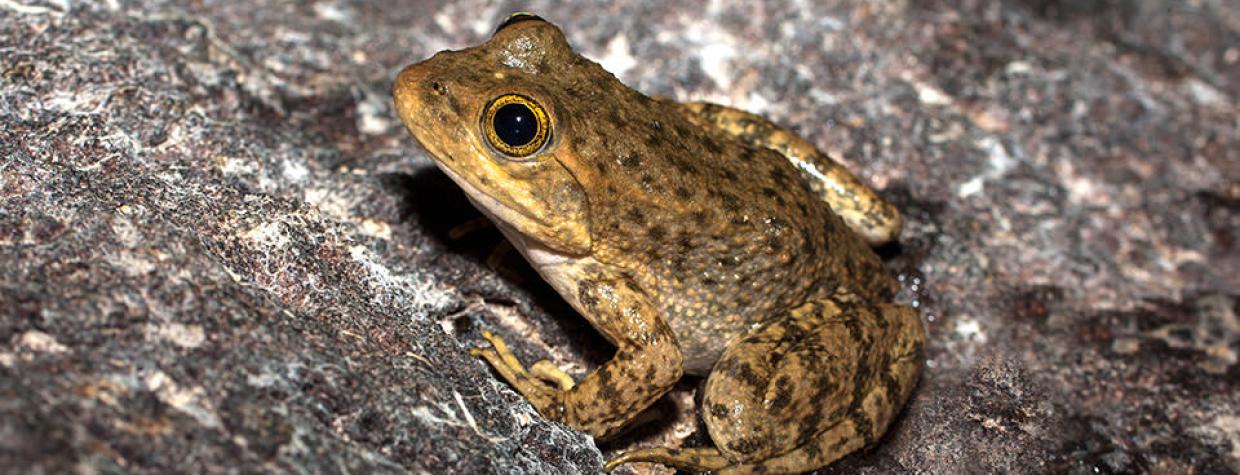Although they’re similar in appearance to American bullfrogs, Tarahumara frogs are rarely seen. And when they are, they’re usually in the canyons of Southern Arizona, particularly in the Pajarito, Tumacacori and Santa Rita mountains. They’ve also been spotted in parts of Northern Mexico — fitting, considering they’re named for the Tarahumara Indians of Mexico’s Copper Canyon.
Tarahumara frogs reportedly disappeared from many of their Arizona habitats in May 1983, due in large part to an outbreak of chytridiomycosis, a fungal disease that affects amphibians worldwide. Emissions from copper smelters, cold weather, flooding and drought may also have contributed.
With brown skin and an olive-green or yellow-orange complexion, these highly aquatic frogs seek out canyons that contain deep plunge pools of water, as well as areas prone to collections of shallow water. The females can lay as many as 1,800 eggs each spring, and the eggs typically form a spherical mass at the bottoms of shallow pools of water.
In response to the decline in numbers, the Tarahumara Frog Conservation Team began attempting to restore the species to its historical Arizona habitats in June 2004, and the Arizona Game and Fish Department continues its effort to maintain the population.
- Hall of Fame
- Explore
- Photography
- Shop
- Classroom
- Subscriptions

